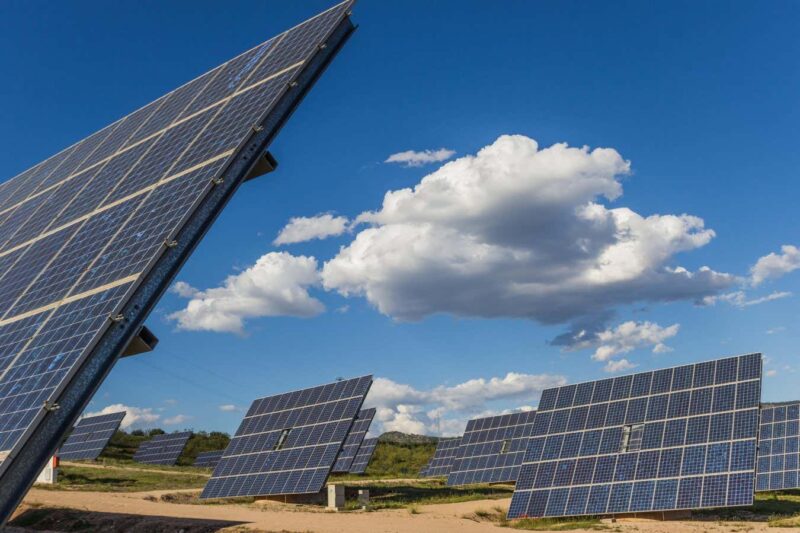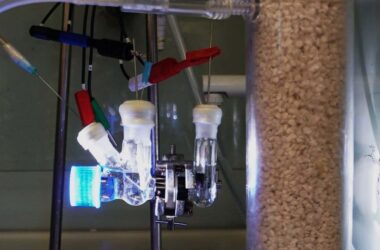Conventional solar panels absorb less than 30% of the energy that strikes them.Photographer: Marc Venema / Alamy Stock Photos
A new type of solar cell has surpassed the theoretical efficiency limit of silicon-based cells, allowing us to gather more energy from sunshine.
Silicon is used in almost all commercial solar cells. These can only convert a small portion of the frequency spectrum of sunlight into energy. Light that falls outside of this spectrum either passes through or is wasted as heat, giving silicon cells a theoretical efficiency limit of roughly 29.4%.
In principle, if another material that generates energy from light in a different frequency range is placed on top of the silicon layer, this limit may be raised. Perovskite, a titanium and calcium crystal, is ideally suited to this since it absorbs light closer to the infrared spectrum, but it has been difficult to make efficient. This is due to stray electrons being reabsorbed into the crystal before they can be converted into electricity.Two research groups have now discovered ways to combine perovskite with silicon to obtain greater efficiency.
Xin-Yu Chin of the Swiss Federal Institute of Technology Lausanne and his colleagues devised a two-step technique to make silicon and perovskite operate together. A precisely fitted layer of precursor chemicals is applied to the silicon cell first, followed by a second layer of chemicals that react with the precursors to generate perovskite. According to Chin, this method reduces imperfections at the silicon-perovskite contact, increasing the amount of electrons accessible for current. The team’s gadget has a 31.2 percent efficiency.
In a second investigation, Silvia Mariotti and her colleagues at Helmholtz-Zentrum Berlin introduced liquid piperazinium iodide into the perovskite layer, which likewise appeared to minimise the errant electrons, attaining a 32.5 percent efficiency. “The efficiency is phenomenal,” says Kyle Frohna of Cambridge University. These estimates, he argues, are now confined to solar cell sizes far lower than what would be necessary for commercial usage.
Oxford PV proved in May that perovskite-silicon tandem cells could be made at a commercial scale, but with a somewhat lower efficiency level of 28%. “If we can make these on a large scale, which it appears that some companies can,” Frohna adds. “The only stipulation is that they must be stable enough to last for an extended period of time.”
FAQs
1. How efficient are conventional silicon-based solar panels in absorbing sunlight?
Conventional solar panels based on silicon technology typically absorb less than 30% of the energy from sunlight.
2. What is the theoretical efficiency limit for silicon-based solar cells?
The theoretical efficiency limit for silicon-based cells is approximately 29.4%.
3. How can the efficiency of solar cells be increased beyond the theoretical limit?
By combining perovskite, a titanium and calcium crystal that absorbs light in a different frequency range, with the silicon layer, solar cell efficiency can be raised.
4. Why is perovskite challenging to make efficient for solar energy conversion?
Perovskite tends to reabsorb stray electrons before they can be converted into electricity, limiting its efficiency.
5. What are the advancements made by the research groups in improving solar cell efficiency?
Two research groups discovered methods to combine perovskite with silicon effectively, achieving efficiencies of 31.2% and 32.5%, respectively.







